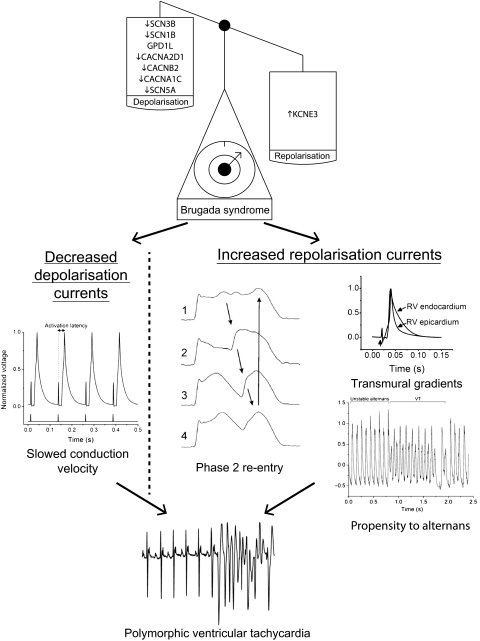Figure 3.
Mechanisms of arrhythmogenesis in Brugada syndrome from animal models. The scales demonstrate that its associated genetic mutations result in a loss of depolarising currents or a gain of repolarising currents. This in turn results in delayed conduction velocity, transmural action potential gradients, a greater propensity to alternans and potentially to phase 2 re-entry. The lowest trace shows an ECG with the initiation of a polymorphic ventricular tachycardia recapitulating the clinical phenotype. All traces shown are from mice except phase 2 re-entry which is from the canine wedge preparation. Adapted in part from Martin et al,29 Morita et al,40 Matthews et al20 and Martin et al,39 with permission.

